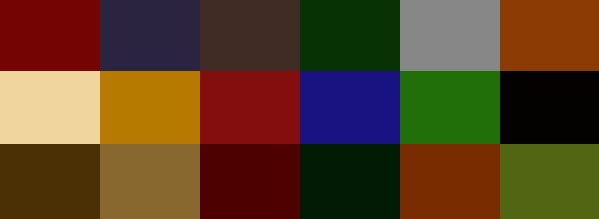The Marches costumes
Look and Feel
The Marches draws strongly on English history from the 12th century through to the War of the Roses for costume, weaponry and armour. This nation is intended to appeal strongly to re-enactors and particularly to people who re-enact this period, partly because of the brief and style of the nation and partly because of the “low-fantasy” nature of the characters. To avoid “creep” please do not use anything from the Tudor period including later-period doublets. This is outside the scope of the Marches setting.
Feel
- Gritty, solid, practical, superstitious, mud, blood, green fields, rural, iron.
Influences
- Wars of the Roses England, Rangers of Ithilien (Beaters), Cadfael (Monks and Landkeepers).
Materials
- Wool, calico, linen, leather.
Colours
- Plain flat colours, mostly the soft colours of natural dyes or unbleached cloth. The palette is autumnal and natural dull blues, greys, browns/ rusts, mustards and greens, dull reds etc. especially at the lower end of the social scale. Wealthier Marchers have deeper, brighter shades.
Similar nations
Dawn
- The nation needs to contrast with its neighbour Dawn. That nation is Arthurian high romance, the plate is gleaming, the colours glorious, bright and vivid. In the Marches everything should have a grubby, worn, lived in look to it. The Marches is Kenneth Brannagh’s Henry V rather than Laurence Olivier’s.
- While there will similarities between Dawn and Marches, Marcher clothes should be made from rougher fabrics, in duller colours. The Marches should look far more real and gritty than Dawn, with the colours dimmed and the decoration stripped back.
- Skirts and doublets should be less sumptuous, with narrower hems and thinner trims.
- Higher class costumes will have a lot in common with average Dawn costumes, with richer colours and finer fabrics. Wealthy Marchers should still use a rich autumnal pallet of berry reds, jewel tone blues and greens and deep blacks, as opposed to the sunny and bright colours of the Dawn nobles.
- Riches should be shown discretely in the Marches, through subtle touches of finer fabrics, in a lining perhaps, or through fancy buttons on an otherwise plain garment, unlike the more obvious Dawnish show with deep fur trims, expensive fabrics and wide, flowing robes and skirts.
Wintermark and Navarr
- There are also overlaps between the Marches beaters, Wintermark's Steinr and the Navarr. Marcher beaters tend to wear light leather armour and simple, earth tone clothes, much like the Steinr and Navarr. The beaters can be pulled more into the Marches by using later medieval period clothing, like doublets rather than tunics, and accessorising with typical Marcher items, like bullock pouches and long belts.
- The look should be simple and unadorned, avoiding large amounts of furs, scraps of leather and paints like the Navarr might wear.
Research
- Historical inspiration
The Marches is the nation that draws most inspiration from historical costuming, drawing from the Medieval period of English history. Costumes should strongly evoke this historical period, although strict adherence to historical accuracy isn't required and a blending of styles from the medieval period, along with some fantasy elements is expected. When researching the styles of the medieval period, re-enactment is a great place to start. Medieval reenactment, War of the roses and 13th, 14th or 15th Century reenactment all provide helpful inspiration.
Women's costumes The key women's garments for the marches are kirtles, burgundian gowns and the cotehardie. Usually a linen shift would be worn underneath a linen or woollen over dress.
Men's costumes Men during this period generally wore a number of variations of a cotehardie, which in the later period became more a fitted doublet. Later style doublets, with slashing and intricate decoration as worn in the Tudor period are not suitable for the marches. Similarly, slashed 'landschneckt' styles are firmly within the nation of League and shouldn't be worn in the Marches. Doublets and cotes should be worn either with narrow fitting trousers, or hose. Either joined or split hose, are acceptable. If you wear split hose you will require a longer shirt than a 20th century one – say 3” above the knee - as it is normal for the shirt to hang out front and rear (thus covering one’s embarrassment).
- Novels
Reenactment groups Some links to reenactment groups' costuming guides - a helpful source of inspiration and information.
In detail
- Breakdown of each garment worn, typical layers and fabrics for each
- links to patterns, shops, traders etc.
- Good substitutions for each garment
Specifics
- Costuming high, middle and low status character
- Men/Women/children in each category?
- What you can achieve at different price brackets? (thinking of doing something along the lines of the Odyssey £30 kit challenge maybe Daisy and Jude!)
Hats and outerwear
- Examples, materials, patterns etc.
Jewellery
Armour
Weapons
Heraldry
Nation specific garment
- Possibly – if we can think of something suitable for each nation!
